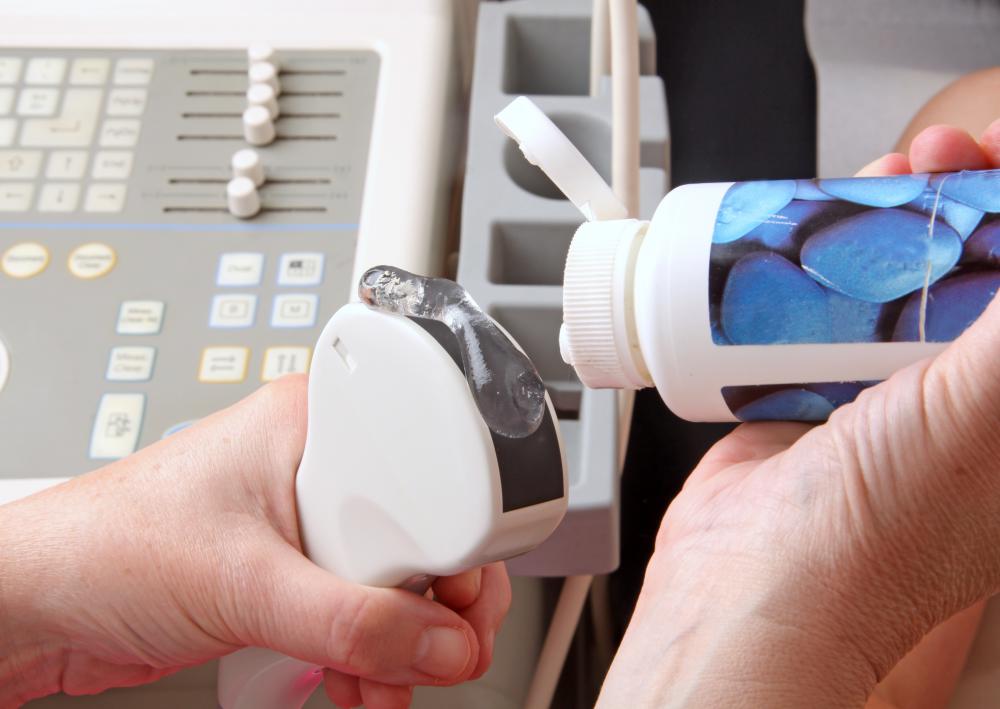At TheHealthBoard, we're committed to delivering accurate, trustworthy information. Our expert-authored content is rigorously fact-checked and sourced from credible authorities. Discover how we uphold the highest standards in providing you with reliable knowledge.
What Is Involved in a Liver Ultrasound?
A liver ultrasound is a medical procedure in which sound waves are transmitted to form images that are projected onto a video monitor, allowing doctors to view the inside of the body and see pictures of the liver. The liver is responsible for filtering out waste and toxins, as well as absorbing the nutrients in food; therefore, a condition that affects its proper functioning may become fatal without treatment.
An ultrasound may be done in order to check for abnormalities, such as masses or discolorations, that may indicate a liver condition, including cirrhosis or cancer. The procedure may also allow a doctor to find out the severity of a condition and to determine the best treatment course. Since it is thought to be relatively quick and non-invasive compared to other tests, an ultrasound is often one of the first procedures used to diagnose a liver condition.

If the body is in the process of digesting foods high in fat, it may affect the accuracy of a liver ultrasound, so only fat-free or low-fat foods are typically recommended in the day prior to the procedure. A patient will generally be advised to not eat at least eight hours before the procedure to ensure that the digestive process does not obscure the appearance of the liver on the ultrasound. No other additional preparation is usually required before the procedure.

A liver ultrasound is typically performed by a radiologist, a medical professional trained in reading the images created during the procedure. A gel is first applied to the abdomen to help ensure the sound waves are transmitted as accurately as possible. A small device known as a transducer is then gently pushed down onto the abdomen and moved around in order to create sound waves and form an image that can be seen on a video monitor. During the procedure, the patient may be asked to lie on his or her back or side so the radiologist can get as clear of a view of the liver as possible. The patient may also be requested to hold his or her breath periodically, which may briefly shift the liver underneath the ribs and make it more visible in the ultrasound image.

The procedure is usually completed within 30 to 60 minutes. It does not commonly cause any pain or tenderness for the patient, either during or after. A radiologist will often interpret the results of a liver ultrasound during the same appointment as it was performed and if any visual abnormalities were spotted in the images, he or she may recommend more imaging tests, such as computerized tomography (CT) scans or magnetic resonance imaging (MRI), blood tests, or a biopsy, to more conclusively diagnose liver abnormalities.
AS FEATURED ON:
AS FEATURED ON:














Discussion Comments
Talentryto, this test will also lead to treatment that will help you take control of your health.
Though medical tests can be scary, a liver ultrasound doesn't typically cause any discomfort. So if you've been told that you should have one, don't wait. The test will likely result in a diagnosis for the problems that brought you to seek medical advice in the first place.
Post your comments